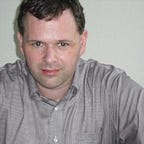This Woman’s Work
Wonder Woman finally arrives on the big screen. And it only took a mere 76 years.
But that’s nothing new. Compared to the other two members of DC Comics’ “Trinity” of iconic heroes (Superman and Batman), the Amazing Amazon has always had to work harder to get her due. Superman got his first live action TV series back in the ’50s and Batman followed in the swinging ’60s. Wonder Woman had to wait until the ’70s. The movie lag was worse. The first Superman movie appeared in 1978, with Batman following in 1989. Wonder Woman had to wait almost another three decades for her shot at the silver screen and in that time each of the Superman and Batman movie franchises rebooted twice.
Wonder Woman is unprecedented, in terms of an iconic female hero fronting a big budget action spectacular. Other comic book-based or -adjacent female characters have come to the big screen, but rarely with Wonder Woman’s name recognition (Supergirl and Catwoman came close), quality (both those movies sucked) or budget (films like Barb Wire and Tank Girl looked as cheap as they were to make).
And yet getting Wonder Woman to the big screen was a (excuse the pun) Herculean task. While Warner Bros. executives had no problems trusting the basic premises of both Superman (powerful alien crash lands on Earth as a baby, is raised as a Kansas farm boy, grows up to becomes world’s greatest hero) and Batman (rich kid witnesses his parents’ brutal murders, grows up to take it out of the criminal underworld in spades), for some reason, the enduring Wonder Woman premise (Amazon warrior princess meets a guy, leaves her island paradise home, becomes world’s greatest heroine) gave them problems. Executives kept wanting to “re-invent” Diana, or “find a new hook” to make her “more relevant.“ Forget that the character is steeped in classical myths that have endured for thousands of years, which have themselves spawned any number of big screen spectacles. Somehow studio executives believed that Wonder Woman’s core concept wasn’t going to attract audiences.
And no matter how often a female fronted or co-fronted action spectacle has succeeded (going back at least to the original Alien franchise and extending as recently as the Hunger Games series), any time a female-led action movie hasn’t worked, studios somehow determine that means audiences don’t want to see female-led action movies. Forget that a male-led action movie fails on an almost weekly basis and studios don’t seem to take that as any indication that audiences are tired of seeing dudes fight and blow up stuff onscreen.
In addition to all that baggage, Wonder Woman also arrived with the weight of expecting the movie to turn around the negative buzz surrounding the DC Extended Universe, the attempt to create a Warner Bros. equivalent to the amazing success of the Marvel Cinematic Universe over at Disney. The Man of Steel, Batman v Superman and Suicide Squad all made healthy profits, to be sure. But all three were battered by critics (not entirely fairly, either). And while fans seemed to like them better than reviewers did, none of them had generated the kind of intense fan attachment that Marvel’s biggest movies have.
With Gal Gadot’s Wonder Woman debut widely agreed upon as the best part of Batman v Superman, hopes were high that her first solo outing would change the conversation for the DCEU. An especially important consideration ahead of the upcoming Justice League ensemble piece.
And of course, Wonder Woman delivered.
It’s by far the best received DCEU movie to date. Reviews have been very positive, buzz is strong and fans seem to be embracing the movie. Early tracking suggests a healthy opening weekend and the potential for a profitable run.
But more than that, the movie is just good. And that’s largely because Warner Bros. finally stopped trying to “re-invent” Wonder Woman and just embraced all the things the character is about. A strong script that maximized the assets of the concept helped. Entrusting the movie to a visionary female director was a long-overdue move for this kind of filmmaking. Patty Jenkins did a fantastic job, deftly assaying the widescreen action and fight sequences, while also deploying a nice touch with the film’s quieter moments.
Wonder Woman really benefits from Gadot’s dazzling star turn in the lead role. She’s charismatic, at turns warm and steely, displaying intelligence, strength, heart and humor. You can’t take your eyes off her, but beyond her beauty, she creates an actual person in Diana of Themyscira, not a marble statue brought to life, but a complex, feeling person with blind spots and setbacks to overcome. For all her outlandish origins, Diana may be one of the most relatable comic book heroes ever to grace the big screen. The ludicrously talented supporting cast is the movie’s secret weapon, providing a strong base to help Gadot shine.
So yes, Wonder Woman has swooped in to save the day. Only a dope would have thought this would go any other way.
